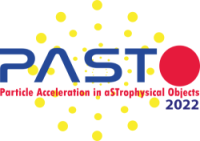Speaker
Description
Supernovae remnants (SNRs) are widely believed to be one of the prime sources of Galactic cosmic rays. They are known to be efficient particle accelerators which is indirectly confirmed by detection of non-thermal emission across the whole electromagnetic spectrum from radio to very-high-energy gamma-rays. Protons and electrons can be accelerated to very high energies of at least several tens of TeV both at the forward and at the reverse shock of the remnant. About 80% of all SNRs originate in core-collapse events and are expected to expand into a complex environment of the stellar wind bubble blown up by their progenitor stars, where forward shock might interact with various density inhomogeneities. Such interaction would cause the formation of reflected shocks propagating inside the remnant which can potentially be strong enough to also accelerate particles. Current investigations of particle acceleration in SNRs are usually limited to forward and reverse shocks ignoring the complexity of the hydrodynamic picture. Although for most SNRs the observed shell-like morphology generally agrees with an idea that high energy particles originate predominantly from the forward shock (for some remnants the significant contribution from the reverse shock was also confirmed), precise spatially resolved measurements do not always agree with a simplified picture giving rise to alternative ideas such as interaction with dense cloudlets . This work is focused on the investigation of particle acceleration at the reflected shocks formed through the interaction of the forward shock with density inhomogeneities and its potential impact on the overall observational properties.

